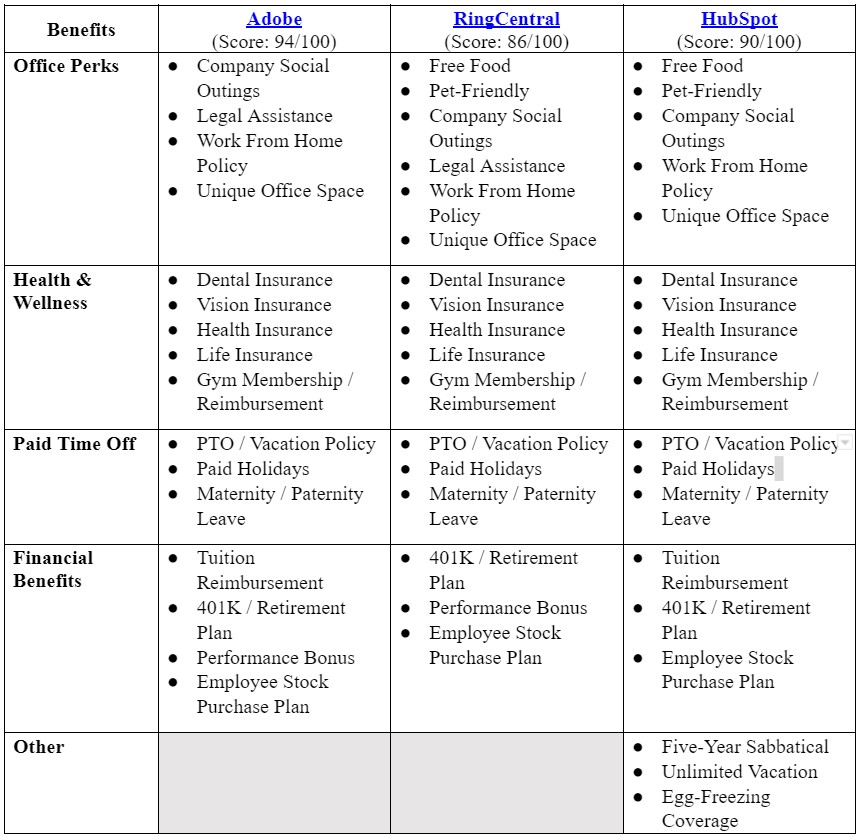
Alright, it's 8am, you’re on the move. Drive out, don’t forget to grab a coffee/juice/tea. You make it into the office with 10 minutes to spare. Great. That’s your morning sorted, and you’re ready to get working.
And then Covid-19 happened.
Various methods have been used to maintain or restore workflow and performance, without spreading that contagious virus. One of those methods that gripped our world is remote working, or ‘work from home’. We’ll be focusing on this, and whether this practice should stay for good!
Cambridge dictionary defines remote working as the practice of an employee working at their home, or in some other place that's not an organisation's usual place of business. So, you could choose to work from home, or from a Starbucks. Why not try the beach if you're near one?
Some companies have had this practice early on, like those in the oil and gas industries which often have to deal with remote worksites, oil rigs, etc. Hence workers that are sent to oil rigs are classified under remote working. Thanks to the pandemic, we’re seeing an uprising of remote work actions being adopted by the current generation of businesses and practices.
Remote working is facilitated by technology like laptops, tablets, smartphones, and desktop computers. These are efficient and useful for companies due to the instant communication and the great savings in cost on the side of the employees. Standard software used for remote work are Zoom, Microsoft Teams, Google Meet, and WhatsApp.
On the topic of remote working, Dr Steven Davis of the University of Chicago had this to say: "Positive consequences will be there indefinitely". Whereas Flexjobs recently conducted a survey involving over 2,000 remote workers during the pandemic, and the results showed that over 50% of the respondents say they want to work remotely even after the pandemic.
"I like to wrap myself in a blanket when I work from home. You could say I now work undercover."

This is arguably the biggest advantage of remote working: It eliminates travelling costs! If you’re in a work from home situation, then you can save on eating out and other costs that may arise if you’re on a daily commute instead. Remember that one time when you had to get out of bed and actually commute to your office?
Everyone hates that micromanaging boss, the distracting co-worker, and the hectic rush of an office work life. With remote working, you can be free to complete your tasks without distraction. This would increase productivity and improve your reliability in your employer’s eyes.
Thanks to remote working being an option, people with physical disabilities can now earn. This can help create a diverse work staff, and create opportunities for people who thought they had none. This also improves the supply of workers in one’s country.
Since you don’t travel about, you leave a very minute carbon footprint. No air or noise pollution. We kind of need that now since climate change is a major concern for us in 2022. Save the plants!
Another big reason for remote working. Most remote workers enjoy the additional free time that comes with the effects of working from home, allowing them to focus more on their family/personal time/friends.
If you’re a social bug, working remotely can affect your social connections as you don’t have a new avenue to create connections. However, you can still communicate with your colleagues via Zoom or Skype
Nothing beats a face-to-face discussion. However, with remote working, there can be miscommunication between employers and employees, even with the available tools for communication. You have to align your visions with what your employers want, to obtain the best outcome for both parties.
This can happen especially if you’re easily distracted with your surroundings. Work from home staff can lose productivity as being in their comfort zone can trick your mind to believe you’re at home so you’d be more relaxed. Definitely can't do that if you’re chasing a deadline on your report!
With remote working, you also have to self-evaluate and see if it's appropriate for your life. We’re listing some things you should prepare for, before you jump into a permanent remote work life.

Setting expectations mentally and physically prepare you for the task ahead. Creating and managing your expectations allows you to tactfully handle your duties whilst keeping issues like procrastination and laziness at a minimum.
Focus on things within your direct control, while crediting your successes and failures to controllable factors (hard work, effort, skill etc). This allows you to stay down to earth and prioritise your focus on what matters. Good self-managers are self-oriented, meaning they make sure that the effort they put in directly contributes to accomplishment.
Working from home has the added advantage of utilising a flexible schedule. So long as you get your work done by the desired deadline with proper time management, you can take some time to include a breakfast date, or a short call with family or friends. This allows you to alleviate any loneliness you may feel from being cooped up at home for long periods of time.
When dealing with the actual work relating to remote work, you should prioritise the completion of said work before attempting to undertake anything that might hinder your time. Sometimes things don’t work out, and you have to choose between work and something else. We recommend completing the work first. It takes a load off your mind and you can focus on your next task.
It's the same as keeping your house or room clean. Having a clean, tidy and neat workspace is visually pleasing. This stimulates you to want to work or if you’re having a rough day, may calm you down. Creating a zen desk for your workspace can improve mood and productivity. It also gives you a sense of work-life balance. Check out how to create your own zen desk here.
Although you can't meet up in person, joining social work groups can have a positive mental effect on your social well being. If there’s none, make your own! Create a subchannel or group on a social/work provider and invite your colleagues. Over there you could share jokes, pictures, advice, work tips, as well as gripe about your boss!
If you’re considering the remote working life, you also have to keep in mind the nature of the job you intend to pursue and see if that aligns with the facets of remote working. For example, the position for a supermarket cashier cannot be done remotely, as one is physically required to be there to facilitate the exchange of goods for cash.

Jobs that can be completed on a laptop or desktop PC are jobs that can be done remotely. Titles like graphic designer, digital marketeer, content creator and e-writers would fit in this scope. Hey, even this piece was written by someone working remotely! *wink wink*
When it comes to customer service, employees usually work in a ‘call centre’, a building that houses all the customer service representatives and provides them with the necessary equipment to perform their tasks. This can now be done at home with just a microphone headset and your laptop. You can also include translators, technical support, and even singers in this scope!
To sum it up, if the job requires a physical presence to complete the tasks, then it's highly unlikely it’s a remote working job. Here’s a list of remote working titles you can consider for your ‘work from home’ initiative.
There are a variety of remote working software/app available, although the most well-known ones include:
You can make your work more pleasurable and help you relax while still getting some work done by reducing distractions. Here are a few ideas:

Make sure to take regular breaks throughout the day, even if it’s just for a few minutes. Get up and walk around, stretch, or do something that will help you relax.
Once you’re done working for the day, make sure to put your work away so you can fully relax in your free time. This means no checking email or doing any work-related tasks outside of work hours.
One of the best ways to reduce stress is to manage your time effectively. This means creating a schedule and sticking to it as much as possible.
Consider adding some calming elements like a plant, a diffuser, or a photo of a place you love. What works for one person may not work for another, so find what helps you relax and stick to it. With a little bit of effort, you can easily reduce stress in your life and create a more enjoyable work-life balance.
Make sure to take care of yourself both physically and mentally. This includes eating healthy, exercising, getting enough sleep, and taking time for yourself.
Based on everything we’ve shared with you, it seems that remote working is here to stay, and is well-liked by many. Singapore is no different, 49% of employed residents worked remotely in 2020. This makes it the highest non-European country to have its residents remote working.
With the pandemic slowly shifting into its endemic stage, you can be sure that remote work jobs will always be around. We’re also including a set of FAQs for you to check out if you’ve got any more concerns.
"The best part about working from home is wearing whatever you want, or nothing at all! Maybe it's time to let loose."

What comes to mind when you hear the term "happiness" at a workplace? Is it about getting a good salary, being rewarded frequently, having a reasonable workload, or working with great people?
Would all of the above be enough to make employees love their job and be eager to walk into the office every day? The truth is that every company in the world would like to have happy employees. However, many are too focused on profits and ROIs, and not enough on how their people are doing and feeling.
SnackNation shared shocking employee happiness statistics, which show that it’s considered a major factor in a company's success and high earnings, such as:
This goes to show how employees can be valuable assets to a company if they're treated well and have a positive attitude toward the company. It’s therefore important to recognise that they are an integral part of the business's growth.
Unfortunately, according to Gallup’s State of the Global Workplace, only 15% of employees are engaged at work. This means that 85% of employees are either dissatisfied with their workplace or are merely doing the bare minimum to get through the day.
Worse, a study conducted by researchers at Ohio State University discovered that people who are dissatisfied with their jobs in their 20s and 30s are more likely to have sleep, anxiety, and depression problems later in life.
It stands to reason that happiness and productivity have a lot to do with one's mental health. That’s why well-balanced people are more productive employees, whereas those who aren't will find it difficult to be satisfied with their job. However, it's a good idea to figure out what's causing the unhappiness and dissatisfaction, and then only figure out how to make things better.
It could simply be a matter of how things are going at work. There's a saying, “People don’t leave bad jobs; they leave because of bad bosses and poor management who don’t appreciate their value”. That's why it's no surprise that YouGov discovered that 64% of employees would prefer a low-paying job they enjoyed over a well-paying job they despised.
Having said that, it’s clear that upper management bears the most responsibility for employee happiness and love for their workplace. There are numerous tips available, but here are a few to get you started.

Happy workers are those who attain a perfect balance between their personal and professional lives. By allowing flexibility, such as a work-from-home policy, flexible working hours, sabbatical leaves, and unlimited paid time off (PTO), employees can better manage their time. What's most important is that your employees complete their tasks by the deadline. Everyone has the right to some freedom, even at work, don't you think?
Making a workplace enjoyable begins with the people, particularly the management. How can employees have fun when management is stringent and unpleasant to be around? Make fun a part of the workplace culture so that everyone enjoys coming to work. Consider adding an entertainment room, a workout area, a snack and food bar, and a chillax corner, to name a few. The possibilities are limitless, so get started right away.
This may not apply to all industries (though it should be!). The management should look past the body inks, peculiar hairstyles, and unusual outfits because everyone deserves a fair chance regardless of appearance. Not only management but all other employees in the office should be expected to accept everyone exactly as they are. It’s time to say ‘sayonara’ to those judgmental thoughts and behaviours.
To gain the trust of your employees, you must first believe in them. When there is trust in the workplace, employees can benefit from a culture of honesty and mutual respect among co-workers. As a result, they are more likely to work hard and remain loyal to the organisation. With trust comes job security, which aids in lowering turnover.
Nobody is born or grows up the same way. We've all been through different things in our lives, and while the experiences may be similar, they are never the same. Some may have faced adversity since they were children, have been bullied throughout their lives or other situations. Regardless, you as employers should be aware of the employees’ background and position. This way, there’ll be a sense of understanding and you can make better decisions when determining what makes employees happy.
This is never easy because every employee has their own mind. It’s, however, doable if management can provide clarity on what should and must be done. You should always share the company's vision and mission with employees so they understand where the company is going. Once everyone is aligned on the goals, it’ll be easier for employees to fall in love and be happy at work, because they understand their role in the company.
Yes, upper management has veto power over what happens in and around the company. Even so, whatever changes occur in the company that involves or will impact the employees, it is best to keep them informed. The world of work is rapidly changing, and, understandably, many businesses are evolving to improve, but bring your employees along with you. Take them on the same path to betterment.

You could create a positive work environment by encouraging team collaboration, listening to everyone's ideas, promoting diversity, and maintaining open lines of communication, among other things. When a workplace gives off positive energy, all employees will feel the same way, all employees will be positive every time they come to work. It's one of the best ways to get them to work well together and appreciate what they have. Above all, positivity makes employees feel valued, respected, and happy.
Most employees want to advance in their careers and be in a better position than they were before. To emphasise the significance of this, Maria Kraimer, a business professor at the University of Iowa, spoke with Business News Daily and shared her thoughts on career paths.
She said, "We found that providing developmental support, such as training opportunities and career mentoring, to employees who do not believe there are attractive career opportunities for them within the company led to such employees leaving the organization. It's critical for businesses to have regular career planning discussions with their employees. As part of training and development, make sure employees are aware of the different types of career paths or job opportunities throughout the company."
Toxic behaviour permeates company culture and, if not addressed early, can destroy an organisation. Employers must understand what constitutes toxic workplace behaviour and how to appropriately deal with such situations. This includes everything from backbiting and bullying, to gossiping and bootlicking. Try to identify any issues as soon as possible and take necessary action. When everyone gets along well with one another, the workplace becomes a better and happier place.
That's what we teach young people, but sadly, in the adult working world, there are still people (read: bosses) who fail to thank and appreciate their employees' efforts. Roofstock co-founder and CEO Gary Beasley spoke to Business News Daily about the importance of saying thank you in an organisation.
He said, "In my experience, employees rarely become unhappy or leave solely over money. When they do become disenchanted, it is usually because they don't like their boss, aren't engaged or feel like they have stopped learning. Having a positive culture and workplace environment helps a lot, as it encourages teamwork and communication, which increases engagement and opportunities for teammates to learn from each other. We also do periodic shoutouts to people at all levels of the organization for great work or superior effort. These kudos cost nothing but provide important public recognition for a job well done, effectively compensating people in the form of social currency, which is highly valued."
When employees are required to be at their desks from 9 a.m. to 6 p.m., it can be stressful and exhausting. On a busy day, some employees may not even have time to eat lunch and maybe compelled to work until late at night. If you think that's work determination, you're mistaken! If you notice your employees working until they drop, encourage them to take a short break away from their desks. It’ll provide them with the opportunity to recharge, relax, and avoid work burnout. Better yet, ask them how you can assist them in making their tasks less strenuous.
We rarely come across businesses that do not provide any benefits to their employees. But, if you're only offering the basics, how does that distinguish your organisation? Aside from the standard medical insurance, retirement plans, dental, and vision coverage, you could consider providing a broader range of benefits. According to PeopleKeep, this includes paid family leave, a four-day workweek, student loan assistance, pet-friendly offices, and fitness perks. The more benefits there are, the happier the employees will be.
Communication is essential for determining whether or not there is a problem at the company as well as receiving feedback on how to improve the workplace. Allow your employees to express themselves by conducting an office performance survey or speaking with them individually or in groups. Inquire about what motivates them to stay at the company and what needs to be improved or implemented. Ensure that information is obtained from employees at all levels. Simultaneously, as management, you must be open and accepting of any criticism or comments.

Assuming you've put all of the suggestions into action; how will you know if they're effective? One method is to conduct an employee performance review, which can be done yearly or as needed. This is the time when you will be able to ask all of the important questions while evaluating your employees' happiness and performance at work.
The D’Amore-McKim School of Business at Northeastern University shared five reasons for conducting staff reviews, which are as follows:
Aside from acknowledging the employees' performance status, the review session allows management to inquire about the employees' well-being. Where relevant, tell them how well they're doing and ask if they'd like a raise. This is significant because failure to provide a salary increase without proper justification can harm employee morale and worsen employee turnover.
The concern is consistent with the findings of CareerAddict.com, which found that the three most common reasons for employees quitting their jobs were a lack of career advancement opportunities, low pay, and the absence of a salary pay raise.
Similarly, Achievers discovered that 54.2% of employees would leave their job for a pay raise, career advancement (37.8%), and better corporate benefits (20.7%).
You now understand the significance of performance reviews and the various things that can be done to increase employee happiness and make them fall in love with the company. But, where is the evidence that they would work?
The top three large companies, according to the Comparably Awards for Companies with the Happiest Employees 2021, are:
So, how do they do it? Given that having great perks and benefits is one of the factors that make an employee happy, let's take a look at their score in this category and what they offer.

That's a pretty impressive list of benefits they have there; no surprise they are in the top three of having the happiest employees!
As an employer, the best and simplest thing you can do to make your employees happy and love the company is to always ask for feedback. There are numerous aspects you’ll be able to uncover, such as what employees want more of, what should be changed, what new things should be added, and many others.
At the end of the day, remember that love works both ways. Employers can’t expect employees to love them if they don’t show love towards the workers, and vice versa (it's a chicken and egg situation!). Then again, you could be doing everything possible, but some employees are simply impossible to please. That's perfectly fine because no one is perfect, and the important thing is that you gave it your all!

Employee turnover is a major source of concern for many businesses because it threatens their reputation, productivity, and performance. While different companies may describe and categorise employee turnover differently, the Cambridge Dictionary defines it as “the rate at which employees leave a company and are replaced by new employees.”
Turnover can generally be classified into two types:
There could be a variety of factors why employees may leave departments or organisations, including burnout, a negative work environment, lack of growth opportunities, a competitive offer, and negative feelings towards management.
It has since been discovered that the most common reason for employees leaving their jobs is due to a toxic work environment. According to the Society for Human Resource Management's report, 'The High Cost of Toxic Workplace Culture', 58% of employees who quit blamed their managers, and the turnover had also cost U.S employers more than $223 billion!
To gain a deeper understanding of this crucial problem that’s causing employee turnover, let's take a closer look at toxic workplace issues and what can be done to create a better workplace.
Toxic workplaces are marked by incompetent leadership, poor management skills, a weak rule of ethics, and poor communication. If these disruptions occur regularly, they could have a detrimental impact on both your physical and mental health.

A study of the UK workforce discovered that toxic cultures caused employees to be less engaged with their jobs, to suffer from anxiety as a direct result of workplace bullying, to seek therapy as a result of an issue they encountered at work, and to call in sick as a result of problematic behaviour they witnessed/experienced at work, among other things.
This is proof that when your job, your working environment, and the people you work with are all negative and distressing, they can begin to affect your life and lead to emotional exhaustion.
Moreover, according to Jeffrey Pfeffer, a professor of organisational behaviour at Stanford Graduate School of Business, the link between poor health and poor workplace conditions is "significant, profound, and has been documented over decades." He also believes it’s a major health crisis, resulting in 120,000 extra deaths in the United States each year!
The hostile workplace and toxic culture will also result in low morale, conflict, negative outcomes, low productivity, inappropriate behaviour, unfair treatment, severe tension, and high turnover among employees. That being said, numerous situations can arise, causing employees to leave in search of a better opportunity.
There are plenty of examples of toxic workplace culture, ranging from office rumours and cliques, to misinformation and poor management. Be it managers, co-workers, and low-level employees, they all have the potential to create that unpleasant working environment.
To see if you’re dealing with toxic work issues, check out the following dysfunctional scenarios.

No matter what you do, whether it’s right or wrong, your boss will always find a way to negatively criticise you, making you feel down the majority of the time at work. To top it off, when he asks you to redo something or is dissatisfied with your work, he screams his lungs out at you until everyone outside his room can hear him.

You were never given a proper job description when you started, so you always do what's expected of you. Then, without realising it, you have multiple superiors telling you to do this and that, and you end up with so many tasks that aren't a priority or even related to your job role.

You did your best to finish and complete all tasks assigned to you, but you received no response after submitting your work. Worse, you only get negative feedback, and are asked to do the work again without any proper instructions. So, you end up figuring everything out on your own, and when you finally get it right, you get no credit at all.

There are employees of various ages and seniority levels in every workplace, but it becomes an issue when you constantly have to back down and give in to those who are older and/or have higher seniority than you. A junior executive employee shared, "Even though my senior executive is new and still needs to learn about what’s going on at the company, we can never agree on what's best because the senior always feels like she's in charge of EVERYTHING!"

The management or human resources department never provided a clear career path or opportunities for employees to advance up the ladder. Everyone is just doing the same thing over and over again, and no one is being sent to training to become better or to improve themselves.

No one knows the exact ratio for good work-life balance, but you'll know it's a problem when it begins to affect your health, relationships, and social connections. Some bosses believe that employees must answer to them at all times, even after office hours and on weekends/public holidays, especially now that some employees are working from home.

Everywhere you go in the office, you'll hear people talking about other employees, departments, management, and even you. You're also worried about offending anyone or saying anything inappropriate because anyone in the office could start snitching on you to the bosses behind your back. Simply put, no one in the office can be trusted.

Employees can't do their jobs properly if their bosses are giving them contradictory orders that are never in sync. For example, you're supposed to be working on a company brochure but got different instructions from the marketing director, the content lead, and the CEO. When something went wrong, everyone started blaming and pointing fingers at you for creating the brochure incorrectly.

When people only want to work with those close to them and refuse to collaborate with others who are not on the same page, the working environment has become toxic. You'll notice certain cliques or groups at work who will only hang out with each other during office hours and even after work.

The company implemented a few toxic workplace policies that appear to be overly strict and outdated, such as a strict dress code, non-flexible working hours, stringent medical leave policies, and making side jobs illegal. This can create a toxic environment by making employees feel unproductive and non-compliant.
Every employee enjoys working in an environment that inspires and motivates them to achieve their full potential. Regrettably, this isn't always the case. The list below will help you identify the different signs of a toxic workplace environment:
Every individual is accountable for improving the workplace so that everyone can work effectively and in harmony. However, as the people in charge of all employees, the HR department and managers must figure out how to prevent and resolve the toxic workplace culture.
Here are a few strategies that could assist organisations in dealing with hostile work conditions and, as a result, reduce high turnover rates:

Although there are various reasons to why employees may choose to leave their jobs, most companies are concerned when turnover becomes excessive and uncontrollable. High employee turnover can be costly and harm the company, including productivity loss, training new employees, added recruitment expenses, and revenue loss.
To mitigate this issue, employers must first understand the causes of employee turnover before making the required changes to keep the employees satisfied and happy. It’s crucial to evaluate all elements and investigate the reasons for voluntary and involuntary turnover when determining the targeted turnover rate.
Although toxic workplace issues are the leading cause of employee turnover, these issues can be mitigated and avoided by listening to employees and learning why they choose to leave or stay. Conduct a survey, individual interviews, or feedback sessions to discover more about what's going on in the company.
Only then, the company will be able to figure out how to nip employee turnover in the bud before it becomes a severe problem!

As soon as you enter the workforce (no matter if it's part time or full), you definitely would have heard about 'HR' and what it means. But, what about people management? This term is actually incredibly important to have in any healthy and successful workplace, as it involves the skill to oversee smooth and efficient workflow, in addition to boosting employee performance every day.
It's no secret that people management is one of the most important skills a company can have. A subcategory of Human Resource Management (HRM), people management is basically the process of recruiting, training, optimising, and retaining employees to showcase their talents for the success of the company.
It can actually be much more than that! On the surface, it may seem like it's all about leading the employees, but this can also mean caring for them, helping them overcome any issues, and pointing them towards excellence with their work – be it for professional or personal goals.
People management also births out the soft skills needed for HR teams to learn and use, in order to guide employees to their best possible performances. As this key aspect includes more expertise, we’re here to help you understand it better.
Keeping the earlier defined meaning in mind, we now know that the function of people management is pretty crucial. To manage a team efficiently, a people-oriented manager needs to have a specific set of skills to promote proper management.
It also does no wrong to identify if you're in a healthy working environment, or if you as a manager are lacking in these skills we’re about to discuss:

Now more than ever, the questions "Are you okay?" and "Do you want to talk about it?" hold a significantly deeper meaning. Since 2020, the Covid-19 pandemic has caused an uproar in people’s levels of anxiety and insecurity when it comes to working. Having empathy will help keep employee productivity high when you try to listen to them, making them feel heard and by understanding matters from their perspective.
There’s just something about a manager who's accountable, honest, and takes action with the aim of correcting a wrong with no other hidden agenda. An employee will always want a leader who not only does the right thing, but also someone who is not biased.
Communication is such a wide term with many definitions. This is why it can get lost in translation at times. As a manager, your communication skills should include (and not only be limited to) listening via verbal communication, but also via non-verbal communication like writing and through public speaking scenarios. Bear in mind that good communication is what defines a successful and failed relationship between an employee and manager.
Great leaders often empower others. When you mentor an employee, you give them the reassurance that they can achieve higher goals as well as better themselves within and outside company grounds.
When half the population is still working from home, it makes it difficult to engage and motivate the staff in a positive manner. With the ‘new pandemic normal’, persuading your employees to be more enthusiastic is not an ideal setting. So, how can you help them?
It really all comes down to what your employee truly desires during these moments. Once you get the gist of it for e.g. if they want to reduce workload, have more responsibility, be paid more, or just simply to be appreciated, it's your job to motivate them to that desired direction. Simply engage with each person to find out what it makes them 'tick' and how to make it happen.
If we were talking about pre-pandemic days, encouraging people would have just meant having an office party or team-building exercises. But as we’re stuck in unprecedented times, it’s hard not to think out of the box. This is where a silver lining to the issue comes in.
As we move into the third year of the pandemic, it has become easier to tap into the ‘new normal’ (learning on the fly does have its benefits!) and establish a good bond with the people you work with. So, how do leaders and HR actually help to encourage that fact?

Well, the first task here is to keep their people up-to-date, be reassuring and build trust. HR personnel’s have to convey messages that are still empathetic, in order to build trust with the employees who are now placed under these different and difficult work settings. They can help to distinguish and prioritise what matters to focus on, and how to safeguard the culture for now.
Another good tip for leaders is to engage their workers in quick surveys and engaging feedback that can provide the HR team valuable insights to narrow down on the decision to check in, motivate or keep people on board. Having a therapist during these sessions can also help calm any tensions in addition to providing a safer environment.
It’s simple. When you begin to invest in your employees with the intention to empower them, they too will begin to give back to the company with renewed vigour, great feedback, and a better sense of purpose.
When you strategically begin to care for the needs of your employees, positive progression takes place – hinting that they are seen and heard. This will birth a thriving new company culture among all.
It's a new way to move forward. While the traditional methods of HR strategy and workforce planning do not meet the current needs, it's time to consider a new approach – one that is fresh and adaptive, with room for changes as the years go by.
You would have to curate a humanising employee experience, one that focuses on them being able to do the job that they truly desire. It's a known fact that happy employees are more likely to stay at a company that respects their wishes and demands, plus understands where they shine best. By promoting their ever-growing success, managers will be able to boost morale, loyalty and commitment among their employees.
It’s nice to think that this is the future we’re possibly looking at, right?
People management is the subcategory of Human Resources that oversees the process of training, development, motivation, and managing of their employees. A manager is usually in charge of the whole department.
The 5 c’s that are usually associated with this are clarity, context, consistency, courage, and ends with commitment.
Skills that every manager should have include: Being empathetic, showing leadership skills, communicating well with employees, is built on integrity and ethics, a key motivator, trustworthy, and someone who is knowledge-seeking.

A performance improvement plan (also known as ‘PIP’) consists of a legal document that contains all the issues that have come up in your conduct at work. The document also includes solutions or remedial steps towards these problems, so that you can correct them.
Now, most people view PIP as a negative sign because it usually signifies that a company is contemplating removing you from the job. This is the reason why every employee fears being put into one, and tends to lose all hope when met with one. But, there's more to it than simply losing your job.
This article aims to clarify everything so that you’re able to know what to expect, and how to go about ‘graduating’ from it!
A performance improvement plan is often introduced by the HR/companiesas a measure to improve workplace productivity in the office. It’s also beneficial for companies to identify whether employees are facing any difficulty in meeting goals, or if they’re resorting to maladaptive/inappropriate behaviours. Because of its probationary nature, the PIP is often misunderstood as a corporate practice for layoffs.
Though this can sometimes lead to the termination of employees who do not contribute to the company's cause, a PIP can be beneficial for management and employees alike. Such plans, for companies, are often an initiative to retain employees, while allowing them to improve their workplace productivity. It’s extremely helpful because it allows the company as well as the employees to evaluate performances that work against the company objectives, and clarifies what’s expected of an employee.

Instead of having your employees panic at the thought of a performance improvement plan, it’s a good idea to explain to them the importance and benefits of such a plan. With adequate support and information, your employees are less likely to think of this formal document as the worst and start collecting their stuff in anticipation of layoffs.
Rather, explaining to them what the plan stands for would give them a better perception. Encouraging your employees to accept a PIP as just another method of help can assist them in realising it as a second chance to get better at their job and improve productivity.
As a manager, it’s always beneficial to be there for your employees, and encourage them to sign. This is helpful in eliminating any confusion your employees might have regarding the procedure. It not only improves interpersonal relationships within the office, but is also indicative of how dedicated your employees are when it comes to executing the tasks mentioned in the plan.
The key is to exercise a positive attitude at all times so that your employees are not demotivated at the thought of signing the PIP. You can also recommend your employees to consult their peers in the office, and find out how they manage to complete all their tasks on time, as well as keep themselves motivated in a workplace environment. It boosts morale and is a good initiation for employees to learn about the benefits of this plan.

Before you proceed to draw one up, you must reconsider and think hard about whether it’s absolutely necessary. A lot of workplace issues can be solved by a simple one-to-one conversation with your employees. But, if you think that won't suffice, then you may go through the following steps to establishing it:
When you hand out the formal document to your employee, you must be extremely clear about your terms and expectations. This is why you must include constructive solutions that the employee should implement to meet your expectations, so that they can work on those specific areas and improve.
You must handle the meeting with extreme care and tend to all the queries of the employee. While explaining the terms and conditions of the PIP, you should also keep in mind to remind the employee that they’re an important asset to the company, and that this plan is their chance to improve and continue being so.
Taking your employees through their PIP is not always sufficient. To yield better results, it’s also important to keep an eye on how your employees are progressing through each stage. Observing their progress and being there to help them tackle any problem they might face are effective ways of implementing the plan and ensuring employee performance improvement.
Once it’s completed within the stipulated time, you can consult the human resource manager to figure out if it was able to yield results that are on par with your expectations. Depending on the outcome, the employee must be made aware of the next course of decision.

The thought of signing for a performance improvement plan can make you uncomfortable and/or worried. However, such plans do not necessarily signify termination. So, there’s no immediate need to panic and prepare for the worst. Instead, having a positive attitude can help you get through with it, while retaining your job.
A motivated mindset can also be a sign that you’re appreciative of your employer’s suggestions, and are trying to improve your value as an employee. Taking responsibility for any previous imperfection is a mature way of progressing with the PIP. If you’re confused about the prospect of being in one, it’s important to get your doubts clarified by the manager or HR. Consulting with your peers is also helpful in progressing with the plan.
To get through this period of time, you can start by improving your efforts to accomplish the goals for the plan. Not only does this show your dedication, but it can also help you better grasp your responsibilities as an employee. You can also set your own goals as you improve in gradual stages. Checking in with your supervisor and consulting with your team can also provide you with valuable information to review your progress with the PIP.

A performance improvement plan fulfils its objective of showing good progress in those aspects where a particular employee was showing deficiency in. Moreover, if the plan fails to attain its purpose, then the company can easily let go of the employees who don’t contribute to the company’s cause, without having to fear a lawsuit.
The following sample will definitely help you to prepare a performance improvement plan, as per your requirements:

There is no specific time period for a PIP. It depends on the kind of tasks that have been included in it.
Not signing a PIP can have serious repercussions within a corporate framework and lead to inconveniences. If your employees are still having second thoughts about signing the plan, it is always a good idea to explain to them the benefits and reasons for it.
A PIP can be extended only if the reasons are very serious. For example, if certain information with respect to a task in the plan is not available at the moment, the HR may consider extending it.
Hearing about a performance improvement plan can result in negative thoughts in an employees' mind. Usually, the most common response to this formal document among employees is panic. As a manager or HR, it’s important to be there for your employees in their times of need.
If your employee is going through a PIP, it’s important to reassure them how valuable they are for the company so that their work output is maintained while completing it. And, as an employee, consider it a chance to showcase your dedication towards the company and keep a positive attitude to train and develop yourself.

Teamwork makes the dream work, but having no clear functions and responsibilities turns your dream work into a nightmare. Clear roles and responsibilities are essential to ensure everything goes smoothly within your team and organisation. Overall, it enhances the productivity of your team members and helps each of you to focus on the tasks assigned to you.
Now, what exactly is team roles and responsibilities? Isn't that something that has already been defined in your job title? Well, not exactly. The role of a person in a team indicates the areas of specialisation in your division. You might be a marketing executive, but your expertise is in writing and not designing. And typically, your responsibilities and functions are defined by your expertise.
We're sure you couldn't wait to know the tips and tricks in helping you to define each person's roles and responsibilities. Still, more importantly, you need to understand the advantages of how clear roles and responsibilities may help you in your organisation.

When everyone understands their roles in the team and what's expected of them, it lets them know the traits and skills they need to work on. This undoubtedly will increase the overall of your team productivity, which increases your team success rate in the fullness of time.
Everyone knows that good communication is the bridge between confusion and clarity. It is one of the most important skills the workforces need to ensure the team's growth. Communication defines how one can frequently communicate with their team members with ease while working on a project. This couldn't be done when one member doesn't know the roles and responsibilities of the other members.
When there is communication, there is collaboration, and having collaboration builds up the skills and knowledge within the team. This will then further help each member to understand their responsibilities further. Collaboration comes naturally when each team member knows clearly about their roles. Ultimately, this will form an excellent organisational approach towards working things out and problem-solving within your team!
Read more: Ultimate Guide To Problem Solving Skills: What Are They And How To Improve Them
Highly efficient team members will always be appreciated in their team. As a result of that, the morale of your team members will be highly increased, which will eventually lead to building them into confident individuals. This will not only motivate them to do better for themselves, but it will also increase their momentum for work.
Employees who clearly understand their roles and responsibilities often contribute a lot to their team's success. They know clearly about their duties, deadlines, and what tools and skills to learn to get the job done perfectly.

Now on to the interesting part. How exactly can you define the team's roles and responsibilities for each individual in your team?
The first thing you should do as a leader before assigning specific tasks to your team members is to recognise their strengths and weaknesses. Knowing their strengths and weaknesses helps in setting suitable tasks for your employees. When the tasks assigned excite them, it will definitely highly motivate them to complete the tasks!
Very much like your team members, your company has to have a clear goal as well. A good company's mission will guide you and your team members in walking towards common goals. Even though everyone's roles and responsibilities are different, having common goals lets them know what needs to be done and how their roles can contribute to the company's mission.
Making a list of tasks you need to get done gives you an idea of how many things you're able to handle. By doing so, you get to answer questions like "Which projects to prioritise?", "Were the past projects successful?", and "What can be improved on the previous projects?" Answering these sorts of questions helps you and your team members work together, utilising every member's expertise in achieving common goals.
As a leader, it's your responsibility to understand your team member's personal goals and guide them to achieve those goals. Often enough, your team members' personal goals align closely with the roles they're playing at your company. A good leader will set measurable and attainable goals for their employees and supervise them in terms of performance in order to enhance their skills. Not only would your team members be able to complete the tasks with ease now, but they're also more skillful in carrying out the responsibilities handed to them.
It's crucial to take note of each employee's job description before you have your duties planned. Employees should receive tasks that are in line with what they're hired for. You shouldn't expect a writer to be good at designing and vice versa. Not to mention, it's very important for you to take their personal goals into consideration when giving them the tasks. And if you combine them both together, you'll be getting yourself a formula in assigning people the right roles and responsibilities.
Again, communication is the key to teamwork. As a leader, you should make sure that each team member is aware of what is to be expected from them. However, communication shouldn't be a one-way thing. It's good to ask for feedback from your employees regarding the responsibilities given to them. It helps create a functional team, but it's also heartwarming for the employees to know that you care about their thoughts and opinions.
When the responsibilities and roles are assigned to your employees, make sure that they agree with it. Don't try to force a role on someone who doesn't want it. Nothing good can come from using force. Your employees will probably do the bare minimums when they're given responsibilities that they don't agree with, or worse, they might resent it so much that it disrupts the flow of your work.

We all know by now that each team member plays a vital role in the team. Some team members are more creative in terms of ideas, while others are good with hands-on tasks. The main point is that all employees have their core values that help bind the team together. A good team member will play the role of being an active listener and participator and carry out their responsibilities in completing all the tasks and assignments given.
A leader is different from a boss, and that's a common saying that we've all heard before. The team leader's primary role is to guide the team in the right direction. Even though the team leader is responsible for giving out the tasks, an effective team leader will give their all in supporting and supervising their employees when they need help and resolving any internal communication issues.
In conclusion, the team leaders and their employees are like cogs and springs. If these "parts" are put together, and everyone plays their role, you'll build a well-functioning team. In addition, as long as everyone in the team is organised and clear about their respective roles and responsibilities, you'll undoubtedly be an efficient team accomplishing all your goals in no time.